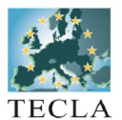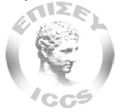Postini was a cloud-based email filtering service, which provided gateway-based scanning for incoming emails to reduce spam and security threats.
The service was acquired by Google in 2007. At the time Google chairman Eric Schmidtsaid Postini, would help Google support enterprise security. However, five years later, in January 2012, Google began releasing new versions of Postini's most important features natively in Google Apps, which effectively marked the end of the Postini product. Rival cloud email scanning service,Mimecast benefited from this move. “Our customers didn’t want to go to a full Google Apps platform," said Orlando Scott-Cowley, product marketing manager at Mimecast.
Law firm BTO migrates spam filter rules
Law firm BTO is one such business that used Google’s intention to terminate Postini as an opportunity to migrate. The company did not want to be forced into running Google Apps.
Alan Fisher, computer systems manager at BTO, said the company had been using Postini for email filtering. “We got notification that Postini was moving to Google Apps. Themigration would mean we would be changing everything and so we looked to see if there was anything else.”
Moving to Mimecast involved replicating the spam filter rules from Postini in Mimecast.
“Our rules were not complex. We used the built-in spam settings in Postini, with different grades 1-5, and iron house disclaimers, all of which was replicated on Mimecast,” said Fisher.
Pinewood Studios follows cost savings
Pinewood Studios began using Postini in 2009. Group IT manager, John Chase, said the film studio began using Postini due to its low cost. But when the spam filter began blocking legitimate messages, he found third-party support lacking. He only found out about the end of support of Postini from Mimecast, during a sales call.
Pinewood Studios switched over from Postini to Mimecast in January 2013. He said pricing was cost-effective and the service was simple to migrate.
“I received step-by-step instructions from Mimecast. There were five steps and I didn’t have to contact support. All we had to do was make a few small changes," said Chase.
The price of customisation
But while migration can sometimes be straightforward, businesses that have customised their cloud service heavily will find it much harder to migrate.
“We’ve seen examples of email spam filtering rules in nested organisations with lots of different polices that were created to solve ad hoc problems,” Scott-Cowley warned. These rules need to be transferred over to the new cloud service.
He said some organisations may also need to ask Google to extract all the data their email data from Postini, “It would take forever to extract data on a per inbox basis. So you need to contact Google to extract data in bulk," he said.
While email filtering is a well-understood cloud service, there are plenty of lessons that can be gleaned from Postini. The IT managers Computer Weekly spoke to did not customise the spam filtering service heavily, which greatly simplified the migration. However, as Scott-Cowley from Mimecast notes, IT departments still need to consider how they will be able to extract large amounts of data from a cloud service.
Another issue for IT is what happens when the underlying infrastructure changes. Google has subsumed the Postini service into Google Apps. In effect, customer will be getting more or less the same thing, although it is now powered by Google Apps. This may be a bonus for some people. But migrating over to Google, especially where customer data has to cross national boundaries is fraught with legal difficulties.
Source: http://www.computerweekly.com/news/2240180290/Switching-cloud-services
photo credit: FutUndBeidl via photopin cc














 "If industry hype is anything to go by, everyone should be using services. But what happens when a cloud service is longer available? This is exactly what happened to Postini’s customers."
"If industry hype is anything to go by, everyone should be using services. But what happens when a cloud service is longer available? This is exactly what happened to Postini’s customers."